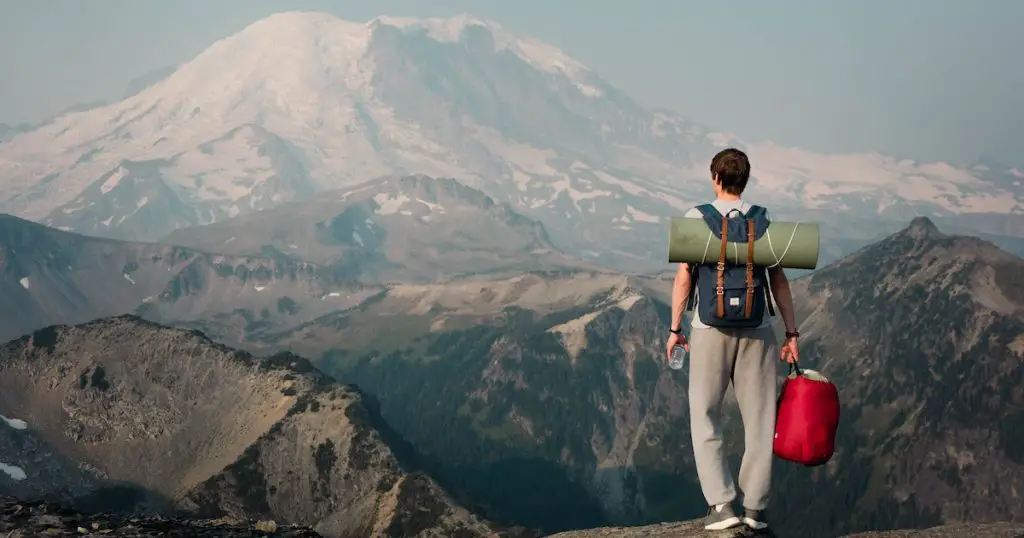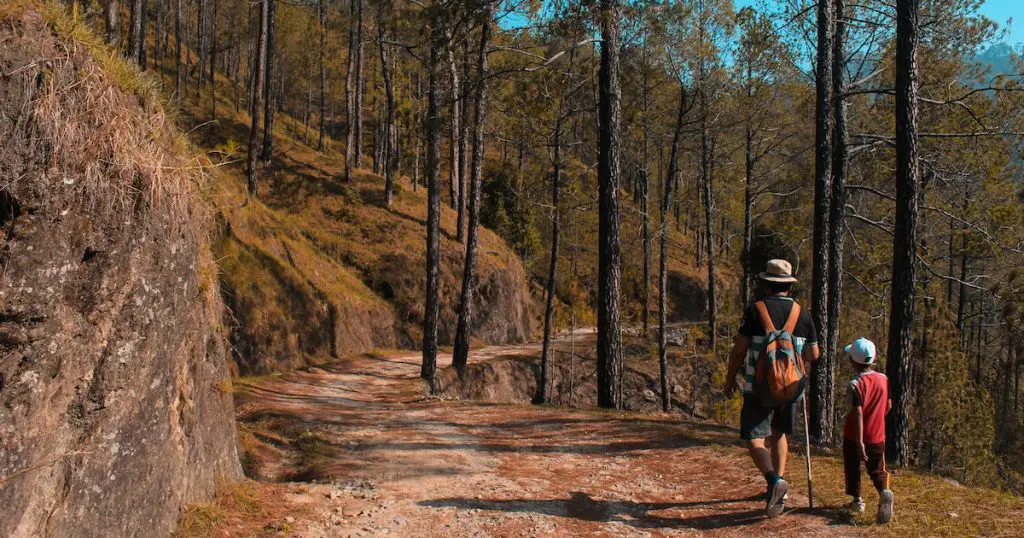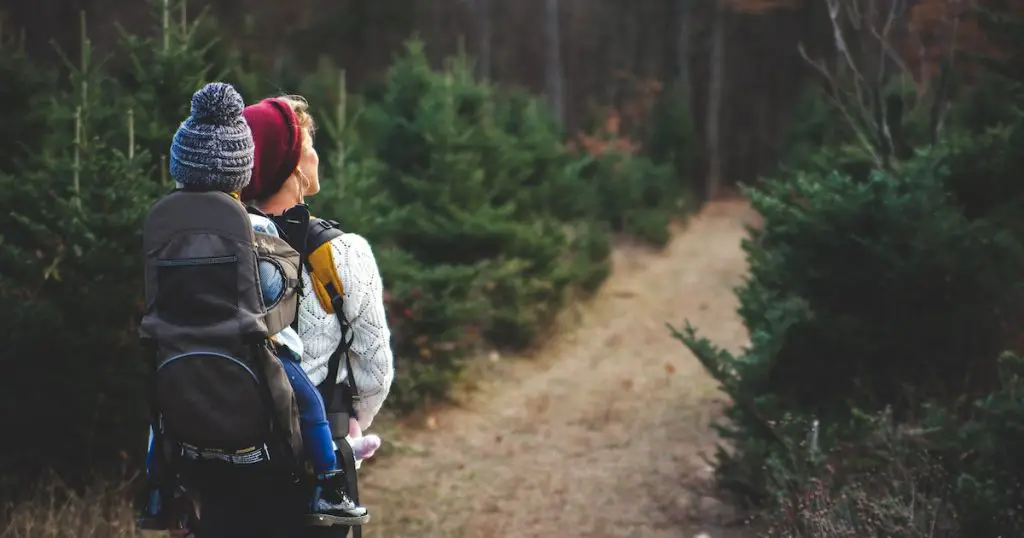Nestled in the heart of Arizona, the Prescott National Forest beckons hikers, explorers, and nature enthusiasts with its picturesque trails and awe-inspiring landscapes.

If you’ve ever wondered about the best times of year to hike trails in Prescott National Forest, you’ve landed on the perfect guide. Here, we’ll traverse the seasonal terrains of the forest, touching upon the highs and lows of each season.
Seasonal Overview of Prescott National Forest
Prescott National Forest is a dynamic mosaic of nature, with each season painting a distinct portrait. Spring brings forth a burst of life, with vibrant wildflowers and awakened wildlife marking nature’s rebirth. Summer’s warmth bathes the trails, drawing in hikers with verdant landscapes and melodious avian symphonies.
Fall drapes the forest in a tapestry of golden and crimson hues, signifying a time of reflection and transition. Winter, with its hushed silvery serenity, turns the forest into a snowy wonderland, promising tranquil treks and icy spectacles. Throughout the year, Prescott National Forest stands as a testament to nature’s cyclical beauty and ever-changing charm.
Spring: Rebirth and Blooming Beauty
Spring in Prescott is akin to nature’s grand awakening. As the snow melts away, streams gush with newfound vigor, and wildflowers adorn the pathways with bursts of color. The temperature hovers around a comfortable 60°F to 70°F, providing ideal conditions for hiking.
However, as beautiful as spring is, the melting snow can make certain trails muddy and slippery. Proper footwear is essential. This season is especially popular among birdwatchers, as migratory birds make their presence felt with melodious songs. BirdWatchingDaily offers insights on which birds one might expect during this time.
Summer: Sun-Drenched Days and Starry Nights
Summer brings longer days, allowing hikers to indulge in extended hikes. The forest canopy becomes a dense green, offering shade and cooler pockets even during the hottest hours. While daytime temperatures can soar, the higher altitudes and tree cover offer relief.
However, it’s important to note that summer can also usher in the monsoon season. Sudden showers, while refreshing, can lead to flash floods. It’s always a good idea to check weather updates, like those from Weather.com, before planning your hike.
Fall: A Symphony of Colors
Autumn in Prescott is a sight to behold. The trails are lined with golden aspens, crimson oaks, and amber maples, creating a mesmerizing backdrop for hikes. The crisp air, with temperatures ranging from 50°F to 60°F, adds a touch of freshness to every step.
Despite its beauty, fall is a transitional season, with a mix of warm and chilly days. Layers are your best friends here, allowing you to add or shed clothing as needed. The forest also gets a bit quieter as many animals start their preparations for the upcoming winter.
Winter: A Tranquil Wonderland
Winter transforms Prescott into a serene wonderland, with snow-covered trails and frozen waterfalls. For those who relish a challenge, winter hiking can be a rewarding experience. The cold, usually between 20°F to 40°F, offers a unique perspective on the forest’s beauty.
However, winter hikes demand preparation. Trails can be slippery, and the snow can obscure familiar landmarks. REI provides a comprehensive guide on winter hiking gear, ensuring safety and comfort during your journey.
Spring Hiking
Spring in Prescott National Forest heralds a renaissance of life. As the snow recedes, trails come alive with budding flora and chirping fauna. The air, fresh with the scent of new growth, carries a sense of renewal. Hikers are greeted by carpets of wildflowers, their vibrant hues punctuating the still-greening landscape.
However, the remnants of winter, like muddy terrains from snowmelt and swift streams, call for waterproof boots and cautious crossings. Spring hiking is a celebration of nature’s rebirth, offering trekkers a front-row seat to the forest’s awakening from its winter slumber.
Advantages of Spring Hikes
The moderate temperatures of spring are a hiker’s delight. It’s neither too hot nor too cold, ensuring comfort throughout your trek. Wildflower blooms, like the vibrant Indian Paintbrush and Blue Columbine, add splashes of color along the trails.
The increased water flow in streams and waterfalls, as a result of melting snow, adds a dynamic element to the landscape.
Trails to Consider in Spring
The Granite Mountain Trail is a top pick during spring. The trail’s rocky terrain contrasts beautifully with the blooming flowers, offering a hike that’s both challenging and visually rewarding. The Willow Creek Trail, with its gentle inclines and proximity to water bodies, provides a more relaxed experience, perfect for family outings.

Potential challenges include muddy trails and the occasional water crossing. It’s essential to have waterproof boots and perhaps a pair of hiking poles for better stability. Local websites like Prescott.com can provide updates on trail conditions, ensuring you’re well-informed before your hike.
Summer Hiking
Summer hikes in Prescott National Forest usher in a vibrant chapter of nature’s grand narrative. The trails are alive with the buzz of insects, the songs of birds, and the lush greenery that reaches out in every direction. Sunlight filters through the dense canopy, casting playful patterns on the forest floor. However, summer hiking also brings with it its own set of challenges.
The heat, especially during midday, can be intense, making it imperative to stay well-hydrated and protected against the sun’s rays. Starting your hike during the cooler hours of the early morning or late afternoon can mitigate the effects of the searing sun.
It’s also essential to be vigilant about wildlife, as many animals are more active during these warmer months. Yet, with these considerations in mind, summer hiking offers the joy of witnessing Prescott National Forest in full bloom, a testament to the enduring vitality and beauty of nature.
Perks of Summer Adventures
One significant advantage of summer hiking is the extended daylight. This means you can tackle longer trails or even multiple shorter ones in a single day.
The clear night skies, dotted with stars, provide a fantastic opportunity for campers to indulge in stargazing.
Best Trails for Summer Exploration
The Thumb Butte Trail is a local favorite, known for its panoramic views of the Prescott area. Those looking for a mix of forested terrain and water bodies can opt for the Lynx Creek Trail. While the heat can be a challenge, many of these trails offer shaded areas, ensuring a respite from the sun.
Staying hydrated is critical during summer hikes. It’s advisable to start your hikes early in the morning or later in the evening to avoid the midday sun. Websites like AllTrails offer user reviews, giving insights into the best times and tips for each trail.
Fall Hiking
Embarking on a hike in Prescott National Forest during the fall is akin to stepping into a living canvas of warm hues and gentle transitions. The forest, adorned in shades of gold, amber, and ruby, provides a backdrop that feels both enchanting and reflective. As the leaves crunch beneath your feet, the air carries a crispness that rejuvenates the senses.
Fall hiking is not just a visual treat; it’s also a tactile and auditory experience, with the sensation of cool breezes and the rustle of shedding leaves. While the milder temperatures are a boon, the unpredictability of fall weather calls for layered clothing to adapt to sudden chills or unexpected warm spells.
Additionally, hikers should be cautious of wet leaves on trails, which can be slippery. All in all, fall hiking in Prescott offers a meditative journey through nature’s grand farewell to the vibrant life of summer, paving the way for winter’s stillness.
Benefits of Autumnal Treks
The biggest allure of hiking in the fall is undoubtedly the foliage. As leaves turn from green to shades of gold, amber, and crimson, the forest seems to don a celebratory cloak. The cool air makes for a refreshing trek, eliminating the exhaustion often felt during hotter seasons.
Wildlife enthusiasts can also spot animals more frequently as they forage and prepare for the winter months.
Must-Visit Trails in the Fall
Goldwater Lake Trail is an excellent choice for those wanting to experience the fall palette up close. Meandering alongside the lake, this trail offers reflection views that double the beauty. For those seeking a bit more altitude, the Spruce Mountain Trail provides panoramic vistas of the forest canopy in its autumnal splendor.
However, as mentioned earlier, fall is a season of unpredictability. Packing layers is key. Additionally, always check local trail advisories; sites like HikeArizona often provide real-time insights from other hikers.
Winter Hiking
Winter hiking in Prescott National Forest transforms the familiar trails into a wonderland of shimmering snow and silvery icicles. The forest blanketed in white, exudes a serene beauty, with every footstep on the crunchy snow echoing the quietude of the season. While the vistas are breathtakingly pristine, winter hiking also poses unique challenges.
Trails can be obscured by snow, demanding a heightened sense of navigation. The cold can be piercing, making it essential to wear insulated, moisture-wicking attire and waterproof footwear. Moreover, shorter daylight hours necessitate careful time management to ensure you return safely before dusk.
However, with the right preparation and respect for the environment, winter hiking can be an unparalleled experience, offering tranquil landscapes and the rewarding challenge of trekking in the heart of nature’s icy embrace.
Reasons to Hike in the Cold
Winter hikes offer tranquillity that’s hard to find in other seasons. The trails are less crowded, and the quietude is punctuated only by the crunch of your boots on the snow.
The challenge of winter hiking also adds a sense of accomplishment to each trek.
Winter-Perfect Trails
Watson Lake Loop Trail, while popular in all seasons, takes on a special charm in winter. The lake, bordered by snow-clad granite boulders, presents picturesque views. For a forested experience, Sierra Prieta Overlook Trail offers snowy pathways amidst tall pines.
Safety is paramount in winter. Ensure you’re equipped with traction devices for your boots and carry extra layers. The American Hiking Society offers guidelines and tips for winter hiking to ensure you’re well-prepared.
The Influence of Altitude
Altitude plays a significant role in shaping the experiences of hikers in Prescott National Forest. As one ascends, the environment undergoes perceptible changes. The air becomes cooler, and the biodiversity adapts accordingly. At higher elevations, you’re likely to find more coniferous trees and wildlife suited to colder, less oxygen-rich conditions.
On the other hand, lower altitudes provide a warmer climate, a different set of flora, and a distinct array of fauna. Besides the biological considerations, altitude also impacts the physical exertion of the hike.
The thinning air can challenge one’s stamina and breathing, making altitude acclimatization crucial for those venturing to elevated trails. In essence, understanding the influence of altitude not only enriches one’s hiking experience but also prepares them for the unique demands of the terrain.
How Altitude Dictates Climate
Higher altitudes generally experience cooler temperatures compared to lower regions. Snowfall is more prevalent and lasts longer at higher elevations, while spring arrives a tad later.
The flora and fauna also differ; higher altitudes see more conifers and specialized wildlife adapted to cooler conditions.
High Altitude vs. Low Altitude Trails
The Groom Creek Loop Trail, situated at a higher elevation, offers cooler temperatures and a different set of flora compared to lower altitude trails like Peavine Trail. When planning a hike, considering the altitude can help in the preparation, ensuring you pack the right gear and clothing.
For those unfamiliar with hiking at various altitudes, MountainIQ offers resources and advice on adjusting to different elevations and ensuring a safe trek.

Wildlife Considerations per Season
In the rich tapestry of Prescott National Forest, each season unveils unique encounters with its diverse wildlife. Spring is a symphony of life, with animals emerging from hibernation and birds marking their return with melodious songs.
As summer unfurls, dawn and dusk become prime times to spot creatures like deer, coyotes, and the occasional bear, making it essential to maintain safe distances and be well-versed in wildlife etiquette. Autumn’s crisp air witnesses animals preparing for the colder months, making it a time of heightened activity.
Winter, on the other hand, is a serene tableau of survival, with sightings of animals showcasing their resilience in the snow-clad surroundings. To hike in Prescott is to walk alongside nature, and respecting its wild inhabitants is vital for a harmonious experience.
Spring: Awakening Fauna
Come spring, the forest witnesses a burst of activity. Birds return from their migratory journeys, animals emerge from hibernation, and the sounds of nature come alive.
Keep an eye out for critters like chipmunks and squirrels.
Summer: Active Inhabitants
Summer sees increased activity, especially around dawn and dusk. Deer, coyotes, and even the occasional black bear can be spotted. Always maintain a safe distance, and educate yourself about wildlife safety.
Websites like BearSmart provide invaluable information about coexisting with these magnificent creatures.
Essential Hiking Tips for Each Season
No matter when you decide to embark on a hiking adventure in Prescott National Forest, being prepared for the season is paramount. Spring calls for waterproof boots to combat muddy terrains from snowmelt, while summer demands constant hydration and sun protection.
As autumn leaves grace the trails, dressing in layers ensures you’re ready for its fluctuating temperatures, and in winter, the serene snowy landscapes demand meticulous preparation with insulated attire and navigation aids.
Equipping yourself with season-specific essentials ensures not just an enjoyable trek but also a safe journey through nature’s ever-changing tapestry.
Spring Tips
Gear Up for Mud: With snowmelt, trails can become muddy. Waterproof hiking boots are essential to keep feet dry and prevent slipping. Beware of Swift Streams: Snowmelt can lead to swift currents in streams.
Always be cautious while crossing, and if in doubt, look for safer crossing points or avoid altogether. For more spring hiking safety tips, the National Park Service provides ample guidelines.
Summer Tips

- Stay Hydrated: The summer sun can be intense. Carry ample water, and consider a hydration bladder for longer hikes.
- Avoid Peak Sun Hours: Start your hikes early morning or late afternoon to sidestep the midday heat.
Fall Tips
Layer Up: Autumn can be unpredictable, with warm afternoons and chilly mornings. Dress in layers to adjust accordingly.
Be Watchful of Fallen Leaves: Wet leaves can be slippery. Watch your step, especially on slopes.
Winter Tips
Know the Trail: Some trails may not be clearly visible due to snow. Familiarize yourself with the route and consider a GPS device. Dress for Cold: Ensure you’re wearing moisture-wicking materials, and avoid cotton. Insulated, waterproof footwear is also a must.
Winter hiking demands meticulous preparation. OutdoorGearLab provides reviews and insights on the best winter gear.
FAQ:
In this section, we will be delving into some of the most common inquiries and curiosities that surround our topic.
When is the peak season for hiking in Prescott National Forest?
The peak season is typically during spring and fall when the weather is moderate, and the forest showcases its vibrant colors.
Are there any trails that are off-limits during certain seasons?
Certain trails, especially those at higher altitudes, might be off-limits during winter due to snow and safety concerns. Always check with the Prescott National Forest official site for the latest updates.
What wildlife might I encounter during my hikes?
Depending on the season, you might come across mule deer, wild turkeys, or even black bears. Birds such as red-tailed hawks and mountain bluebirds are commonly spotted. Always maintain a safe distance from wildlife.
How can I stay informed about trail conditions and any restrictions?
The Prescott National Forest official site provides regular updates on trail conditions, any restrictions, and safety advisories.
Conclusion
Prescott National Forest, with its diverse terrains and dynamic seasons, promises an unparalleled hiking experience, no matter when you choose to visit. By understanding the nuances of each season, you can ensure a memorable and safe hiking adventure.
Whether you’re chasing the vibrant hues of fall or the tranquil snowscapes of winter, Prescott’s trails await your footsteps. Lace up your hiking boots, and let the journey begin.



Leave a Comment
You must be logged in to post a comment.